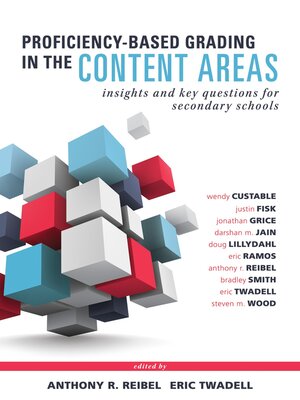Proficiency-Based Grading in the Content Areas
ebook ∣ Insights and Key Questions for Secondary Schools (Adapting Evidence-Based Grading for Content Area Teachers)
By Wendy Custable

Sign up to save your library
With an OverDrive account, you can save your favorite libraries for at-a-glance information about availability. Find out more about OverDrive accounts.
Find this title in Libby, the library reading app by OverDrive.



Search for a digital library with this title
Title found at these libraries:
| Library Name | Distance |
|---|---|
| Loading... |
No matter the content area, evidence-based grading puts student growth at the heart of the classroom. Designed for teachers and administrators of grades 6-12, Proficiency-Based Grading in the Content Areas details a five-step approach for implementing evidence-based grading and maintaining its effectiveness over time. This book equips any educator — from technical to fine arts — with the tools and support to make this important shift.
Use proficiency-based grading (also known as evidence-based grading) to drive student success:
Contents:
Introduction
Chapter 1: Implementing Proficiency-Based Grading With Core Belief Fidelity
Chapter 2: Implementing Evidence-Based Reporting in Career and Technical Education
Chapter 3: Implementing Evidence-Based Grading in English Language Arts
Chapter 4: Implementing Evidence-Based Grading in Fine Arts
Chapter 5: Implementing Evidence-Based Grading in Mathematics
Chapter 6: Implementing Evidence-Based Grading in Physical Education and Health
Chapter 7: Implementing Evidence-Based Grading in Sciences
Chapter 8: Implementing Evidence-Based Grading in Social Sciences
Chapter 9: Implementing Evidence-Based Grading in World Languages
Epilogue: Creating Self-Reliant Learners
References and Resources
Index







